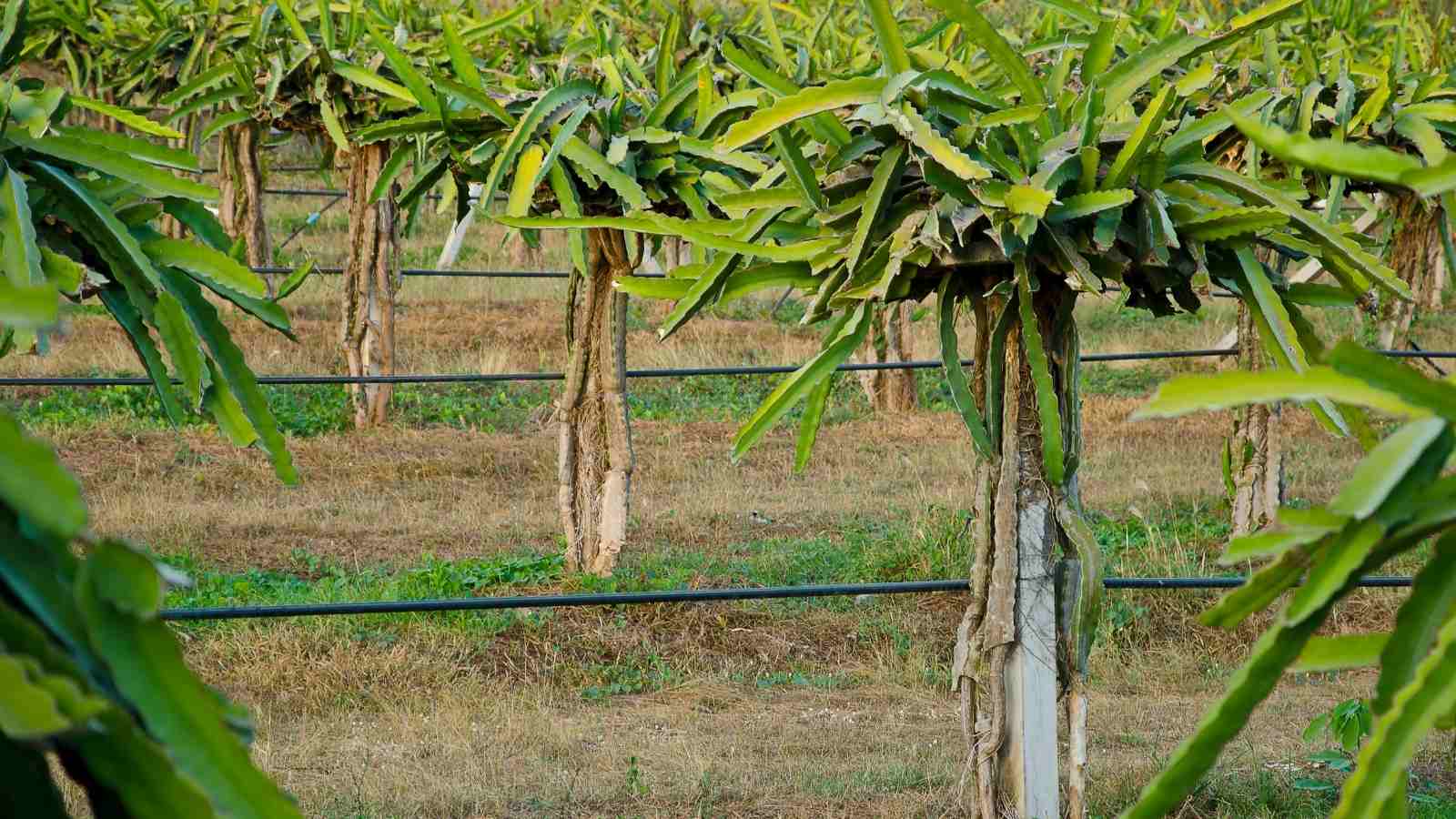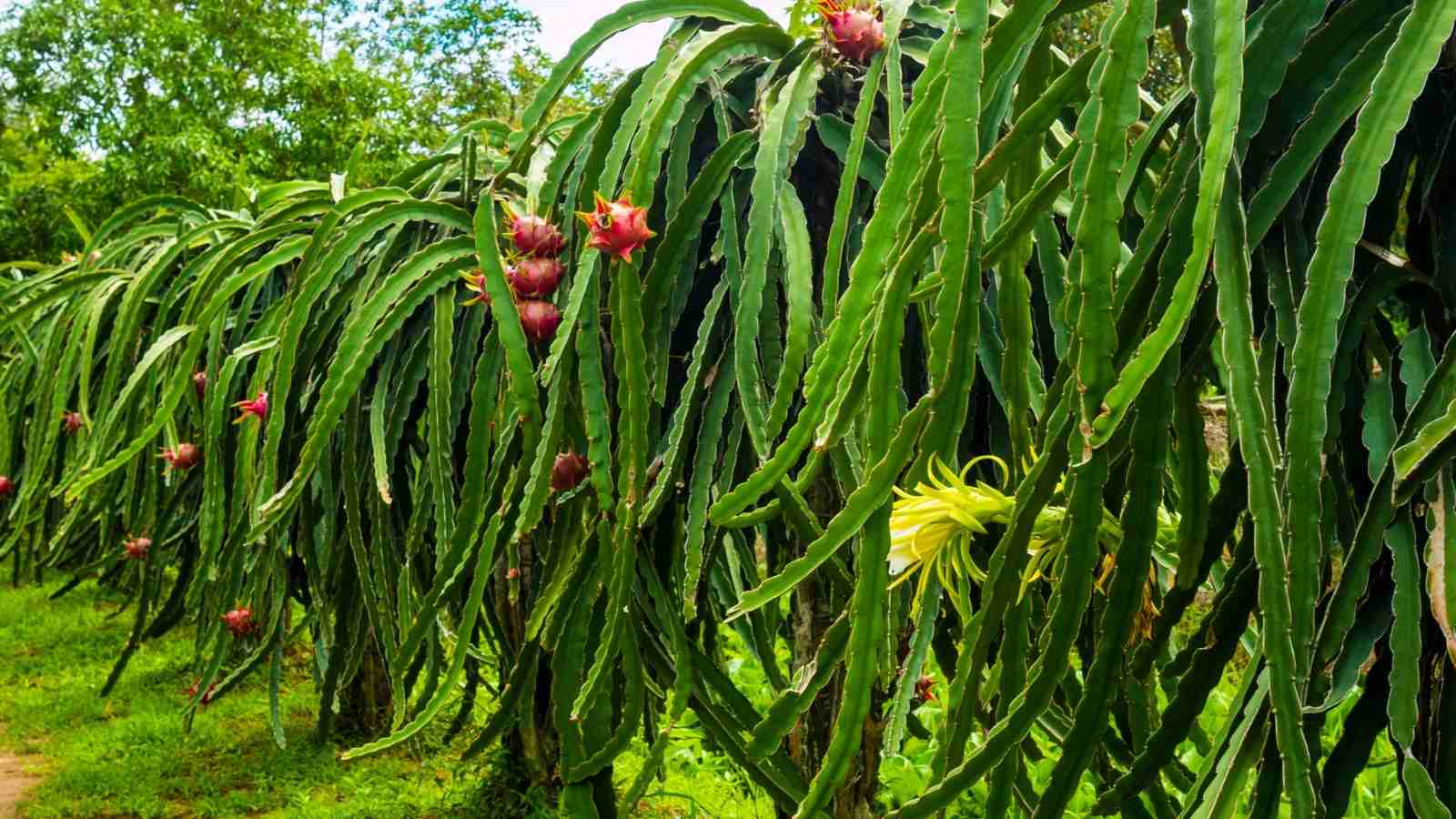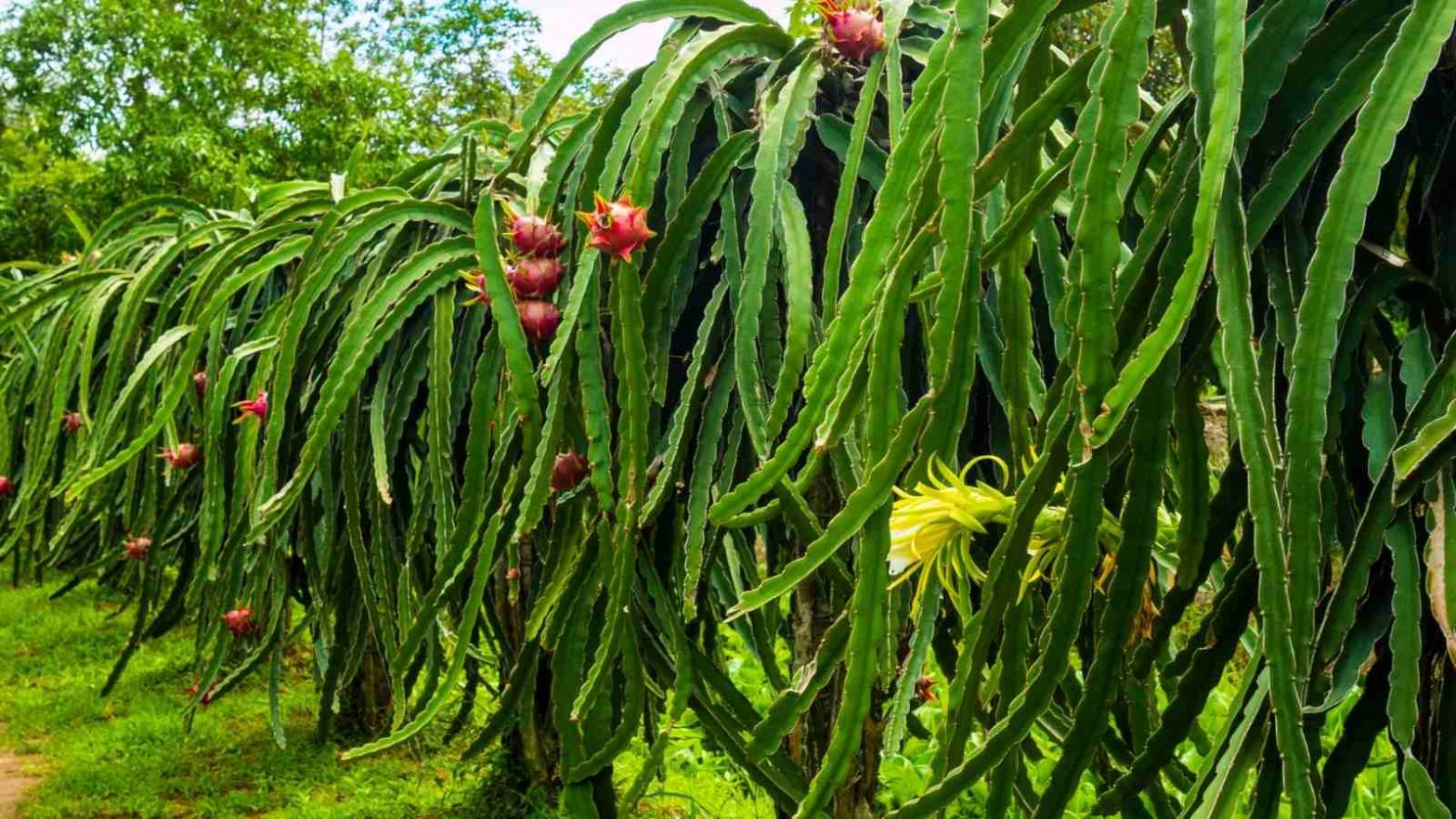To begin with, the dragon fruits are part of the exotic plants that are grown in India. These fruits were not found here even until the last few years. The dragon fruits were found in the countries namely Vietnam, Sri Lanka, Thailand and Israel. Owing to the high popularity of the fruit all across the world. These fruits started meeting high demands in India as well. It is needless to mention that constant import of exotic fruits did turn out to be cumbersome. So, the domestic farms started to grow these fruits to cut down the excess cost involved in the importing business.
These fruits not only look attractive but happen to be very nutritious. This fruit is rich in prebiotics which help in keeping a healthy digestive tract. Moreover, these fruits contain a good amount of phenolic acids, flavonoids (these are a type of antioxidants), betacyanin and a high amount of fibre. These fruits are very helpful in reducing or at least keeping a balance in the blood sugar levels.

These certainly contain high levels of Vitamin C, riboflavin and Magnesium which helps in boosting the overall immunity of the consumers. With the gorgeous red looks, the fruit is also called as ‘strawberry pear’ and ‘pitahaya’. Here in, with greater detail, we have brought to the readers, the various facts which are related to the dragon fruit farming in India.
1. What are the soil requirements to raise extensive dragon fruit farms all over the country?
These fruits do not tend to demand much with respect to the types of soils in which they can be planted and thus, get consequently cultured.
- It is needless to mention that the soil has to be properly tilled at first and needs to be ploughed heavily to make them loose.
- The pH of the soil to grow these fruits range between 5 to 6.5.
- The dragon fruits tend to grow even in the sandy soils and also can be grown in the deep loamy soils. The soil needs to be properly irrigated before planting the seeds of the fruits.
- With regular irrigation, the soil not only needs to be moist during the initial days but also needs to be properly aerated.
- The irrigation of the soil need not to be too much as to clog the roots of the plant thereby, rotting the roots of the plants. This might lead to the premature death of the plants.
- The soil has to be properly infused with heavy organic manure consisting of straws, chicken manure and also green leaves’ composting.
- These dragon fruit plants are grown upon soil beds. These soil beds happen to be like a bound with a height of 30 cm to 45 cm on an average.
2. What are the most important climatic conditions required to grow better dragon fruits in India?
The dragon fruits are very adjusting plants. So, to say, they can easily grow even in the hottest of the temperatures and also in the coldest temperatures. However, the best range of temperature within which these fruits can be grown and extended is 20 degree Celsius to 30 degree Celsius. With the given temperature requirement, the fruits need proper amount of rainfall as well.
On an average, the plants need 40 cm to 65 cm of rain all round the year. It needs to be taken in consideration that these plants cannot withstand extremely speedy winds or heavy thunderstorms. All the more, these plants cannot grow well if planted in the frost time of the winters. It is always better to plant these fruits underneath a larger shade so as to not welcome in any sort of a dire situation.

3. When and how to harvest the dragon fruits?
Like all other plants, the harvest season for the dragon fruits are also extremely important. The harvest season should not be delayed as they might invite pests which will drastically reduce the productivity of the plants. On an average, these fruits are to mature within a time span of a month or at times, it might get extended up to some 45 days.
It has to be mentioned to the farmers that once the fruits get matured or ripe enough to be picked. Then the process of harvesting should start as soon as possible. It is very important for the farmers to know that if they tend to wait even till 4 days before picking the fruits, then the entire lot might get rotten. The fruits need to be twisted in a clockwise manner to pick them in order. This technique reduces the scope of harming the plants during the harvest.

